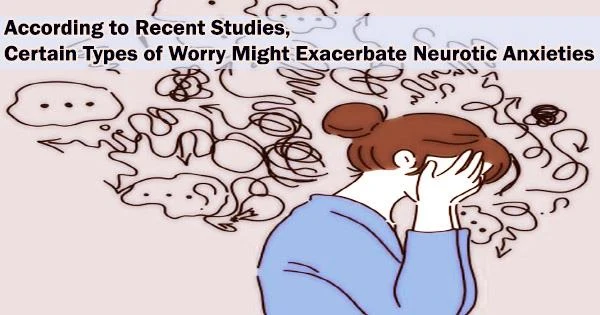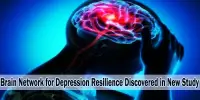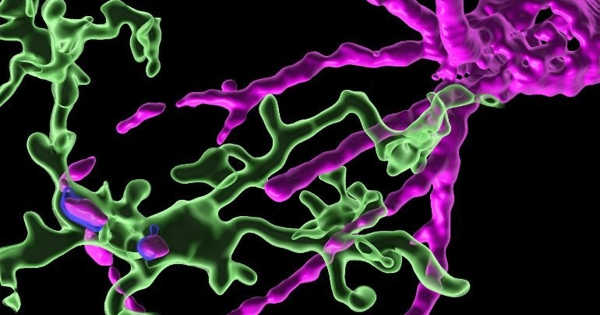It’s still quite difficult to comprehend the causes of neuroticism in the psychology and mental health professions as a whole. Some could counter that it’s a genetic predisposition that won’t alter and won’t change over the course of your life. However, might there be more to neuroticism than personality psychologists have been unable to determine?
According to Rachel Menzies and colleagues from the University of Sydney (2022), fear of dying is a “transdiagnostic” trait, or a factor that underlying a variety of “mental health conditions.” Unfortunately, the underlying dread of death is not addressed in treatment for these disorders, which results in what some authors refer to as the “revolving door” in clinical practice.
Menzies et al. list a variety of mental disorder symptoms, including obsessive washing and social avoidance, as being connected to death fear. The revolving door metaphor alludes to the possibility that, in the absence of treatment for this fundamental cause of anxiety, symptoms of one disorder may be relieved only to be subsequently replaced by symptoms of a different disorder.
Neuroticism and Death Anxiety
People who worry and stress all the time don’t enjoy life as profoundly as they could, unless they have a recognized or diagnosable psychological disease. They constantly consider what could go wrong and keep an eye out for potential risks or dangers.
Maybe there’s a friend you need to buy a gift for together for a forthcoming event. You are forced to move from shelf to shelf with this person after choosing which store you visit.
As you point to item after item, you are met with criticism about each one: This top is “too bright”, this other one is “too blah”, and the other possibilities are “too expensive”, this is “too cheap”, and none of them are good enough. “Just pick something!” you mutter under your breath as the minutes tick by.
Although it may be a stretch to assume that this person’s ambivalence is caused by a deep-seated fear of dying, if it is one of several behaviors you have observed frequently, it would fall under the Australian study team’s description of neuroticism.
As a result, the root of this neurotic personality feature may very easily be attributed to the frequent checking and hypervigilance linked to death dread.
Indeed, as the authors note, “death anxiety is associated with a number of important psychosocial outcomes in a number of areas, including reduced self-esteem, attachment stability, and meaning in life as well as poorer quality of life.”
How to Tap Into Death Anxiety
Despite being constantly reminded of mortality by news reports, crime dramas, horror films, and other media, it is uncommon in Western culture to openly confront people’s sentiments about death in daily life.
However, psychological assessments of this fundamental type of anxiety have consistently struggled with a lack of clarity, empirical backing, and even adequate study focus. Early work in this area was stymied by a confusing miscellany of terms in which “fear” and “anxiety” were used interchangeably even though they don’t necessarily refer to the same psychological entity.
As noted by the authors, in describing the 21 separate measures of this quality from 89 different studies, an earlier review concluded that: “not one measure of death anxiety demonstrated both adequate psychometric properties and clinical relevance.”
This reality didn’t deter Menzies and her team, who set out to create and validate their own measure based in part on earlier research. They note that the desire to be able to measure patients’ own “maladaptive beliefs regarding death” is the driving force behind this effort.
You might ask, how could anyone’s thoughts about death be anything but maladaptive? Can anyone really contemplate their mortality without becoming at least a little uncomfortable?
Of course, everything is relative, but ideally, a person might see death as a normal aspect of existence that shouldn’t be dreaded or as Emily Dickinson put it, as something that might “kindly stop for me.” The Menzie study team believes that a measurement of death anxiety should be able to identify problematic feelings and behaviors as well as maladaptive ideas about death.
Menzie and her colleagues examined their 18-item death fear scale against previously accepted measures of neuroticism as well as other, related traits including stress, anxiety, and depression to tie this back to neuroticism. They used over 1,000 adult samples from the population and people seeking treatment, ranging in age from 18 to 68.
With this background, you can now take the resulting Death Anxiety Beliefs and Behaviours Scale (DABBSS), using the instructions specific to each group:
Rate each statement from 1 (strongly disagree) to 5 (strongly agree):
- I feel anxious about death
- The thought that I will die someday is terrifying
- I am scared of dying
- Death frightens me
Indicate how frequently you are troubled by each thought from 1 (strongly disagree) to 5 (strongly agree):
- It would be terrible to not have time to experience everything I want to
- It would be horrible to die alone
- My death will be a painful experience
- I could not cope with growing old without my loved ones
- I will lose a loved one suddenly and it will destroy me
- On my deathbed, I will not be able to face death as bravely as I should
- I would not cope if someone I care for developed a fatal illness
Indicate how frequently you would avoid each of these situations on a scale of 1 (never avoid) to 5 (always avoid):
- Watching or reading news stories about dying
- Thinking about being diagnosed with a terminal illness
- Reading a novel with a character who is dying
- Thinking about a loved one dying
- Watching a film or TV show with a character who is dying
- Thinking about myself dying
- Reading a memoir or essay by someone diagnosed with a terminal illness
Did your responses surprise you at all? Had you not realized that you don’t even like Disney movies in which a major character such as a parent dies or is killed?
On average, the validity samples in the Menzies et al. study scored at about the midpoint of each scale (average score was approximately 53), and ranging from slightly over 2 to just over 4. Perhaps not surprisingly, scores on the last set of 7, representing death-related behaviors were lower than death-related beliefs; affect scores (the first 4) had the lowest average (at the exact midpoint of 3).
Turning next to the question of how these scores would relate to neuroticism, the correlation to a standard measure was .35, lower than its relationship to level of anxiety or stress (.41 and .38) but higher than depression.
The authors did demonstrate in a separate analysis that the DABBS scores differentiated significantly between clinical and non-clinical samples, but they did not do statistical tests that would rule out interactions among the criteria measures.
Turning Death Anxiety Into Acceptance
Now that the DABBS is ready for more testing, it’s probable that future studies will delve deeper into both its statistical and clinical applications. It nonetheless offers a fresh perspective on figuring out and comprehending the characteristics that neuroticism and its more clinical manifestations in anxiety and depression may have at their core.
Most useful, from a clinical standpoint, are the items that tap into death-related beliefs (the second grouping). In keeping with the cognitive behavioral approach, therapy can concentrate on identifying those unhelpful beliefs and assisting the patient in reframing them in a more constructive manner. If you answered “yes” to many of these questions, consider why you feel this way (for example, if you find death to be “horrible”); if not, consider how death might “kindly halt” for you and the people you care about.
To use your neurotic shopping buddy as an example, it would be inappropriate to bring out the DABBS and perform a fast death anxiety check on them. You might, however, come to see why someone might be so hesitant to make a final decision, possibly out of a sense that something very horrible would happen if they picked out the wrong gift, such as receiving a critical remark from people present at the occasion. Noting that insecure attachment is part of the constellation around death anxiety, Menzies et al. might support such an interpretation.
To sum up, high levels of neuroticism may come from surprising sources. Addressing death fear as one of them may assist people in reshaping and reframing their perspective on both death and life in general.
















